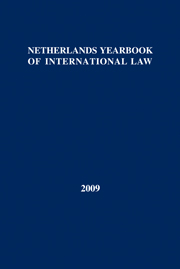Article contents
Loopholes, risks and ambivalences in international lawmaking: the case of a framework convention on victims' rights*
Published online by Cambridge University Press: 09 November 2007
Abstract
The core document so far in the field of the protection of victims' rights is the “Declaration of Basic Principles of Justice for Victims of Crime and Abuse of Power”, adopted in 1985 by the UN General Assembly. Starting from the notion that this is a declaration ‘only’, it was suggested by some to develop a victims' rights convention, aiming to improve the legal status of the rights concerned. Following that suggestion, the initiative was taken by independent experts to draft the “UN Convention on Justice and Support for Victims of Crime and Abuse of Power”.
This article firstly discusses the legal status of the 1985 Declaration, including the question what parts might have reached the status of international customary law. This analysis is followed by the question of what can be learned from today's academic discussions on characterising international legal standards – hard alongside soft law, etc. – and from recent debates on lawmaking in the international legal field (inter alia, communicative lawmaking and co-regulation). The article addresses some major risks, when embarking on the route of a possible victims' rights convention, including experiences to be drawn from other policy areas. Having done this, it comes up with the instrument of a framework convention, combining the benefits of legal bindingness with the flexibility and ‘stepping-stone character’ of successful soft law documents. It is seen as a way out of the problems discussed in the article. After having presented some further thoughts on monitoring procedures, the article finally takes a careful look at the previously mentioned Draft Convention.
Keywords
- Type
- Articles
- Information
- Copyright
- Copyright © T.M.C. Asser Press 2006
References
* © W. van Genugten et al., 2007.
- 4
- Cited by


